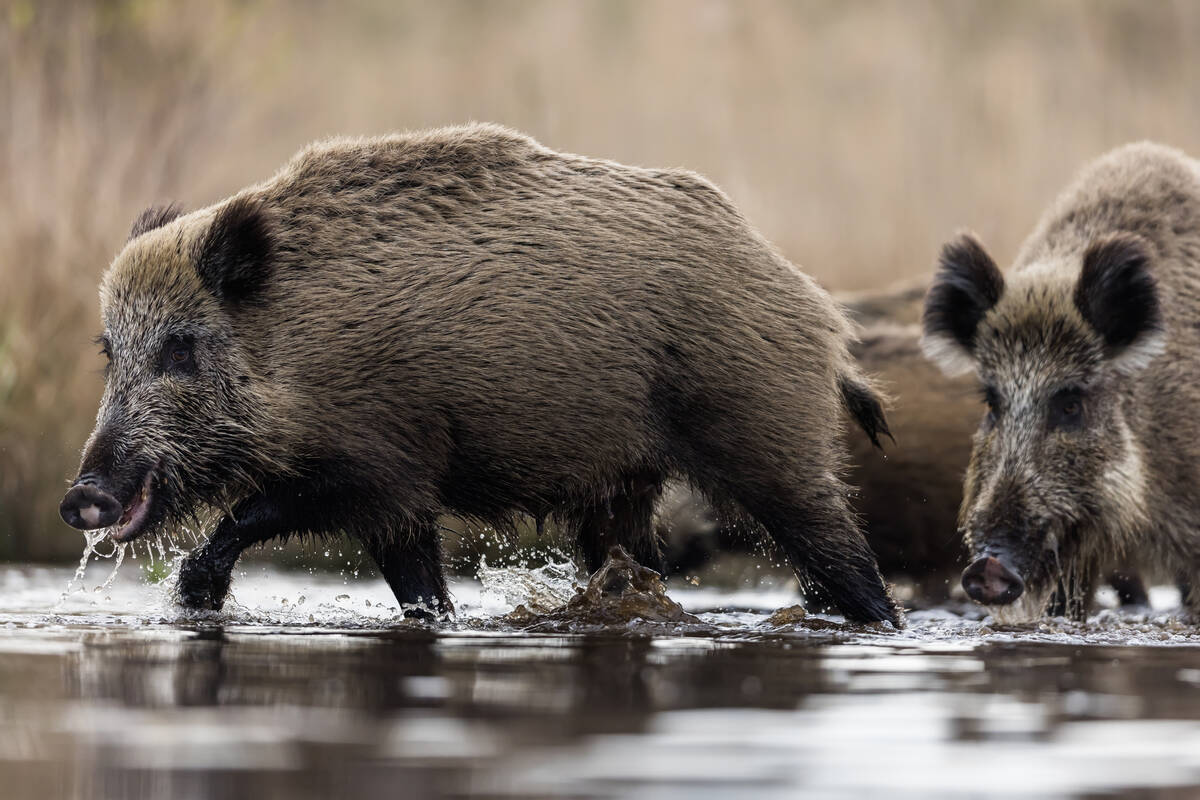Anyone who has dealt with a calf scours outbreak knows how difficult it can be.
Not only do producers have to keep on top of treating sick calves and keeping them alive, but they must also deal with the extra labour associated with calving.
Veterinarians and producers must focus on three key factors to prevent outbreaks from occurring: the agent that causes the disease, the calf’s immunity and the environment.
The common agents that cause calf scours include viruses such as bovine rotavirus and bovine coronavirus, bacteria such as E. coli and parasites such as cryptosporidia and coccidian.
Read Also

Manitoba bans wild boar possession
Manitoba has tightened the regulatory status of Eurasian wild boar in an effort to help fight back against invasive wild pigs.
The unique aspect of calf scours is that almost all the agents are widespread in cattle populations. Therefore, disease prevention needs to focus on the calf’s immunity and the environment.
The importance of calves receiving adequate colostrum in the first six hours of life is a key to scours prevention. In addition, the cow herd can be vaccinated before calving begins to boost the immunity against rotavirus, coronavirus and E. coli in the cow’s colostrum.
However, even with vaccination, this can all be overwhelmed if we don’t pay attention to the environment.
Cold environmental conditions and moisture such as mud and snow can be a significant stressor that may affect the calf’s ability to fight off disease or obtain adequate colostrum at birth.
Crowded conditions can increase a calf’s contact with many of the agents that cause scours by increasing its contact with manure from adult cows.
It also increases the number of times the calf is exposed to the viruses and bacteria that cause calf scours.
As well, crowded conditions make it easier for the infection to spread from calf to calf or to persist in the environment once one calf becomes infected.
Environmental contamination may also increase when conditions are wet and cool. The amount of virus, bacteria and parasites that each calf sheds begins to increase as multiple infections take place in the herd, whether it be dam to calf or older calf to younger calf.
The vicious circle of environmental contamination can be difficult to break once it has begun. One of the major benefits to having cows calve on pasture is the ability to spread cows out and limit environmental contamination.
A major strategy was developed at Agriculture Canada’s research centre in Lacombe, Alta.
The Lacombe calving system involved overwintering cows in an area separated from the calving area.
Cows were moved onto the calving area just before calving began to keep the calving area as clean as possible. Cow-calf pairs were then moved to paddocks or pastures as soon as possible.
Several paddocks allowed different ages of calves to be separated from each other.
A system known as the Sandhills calving system has been used in ranches in Nebraska. It was designed to limit exposure of calves to the agents that cause scours by using clean calving areas and preventing contact between younger and older calves.
In this system, cows are overwintered in a separate area before calving, but seveal calving paddocks or pastures are used instead of just one.
The cows are moved onto the first calving area once calving begins. After a week or two, the cows that haven’t calved are moved onto the next calving area and the cow-calf pairs are left behind. This procedure continues until the last group of cows has calved.
The Sandhills calving system allows cows to calve on “clean” calving areas and also provides for separation of older calves from younger calves.
It is also easier to move pregnant cows to the next calving area instead of moving cow-calf pairs.
In some situations, producers may be able to sort pregnant cows into early calving and later calving groups based on pregnancy examination results.
Both systems focus on the environmental risk factor of calf scours. There are obviously limitations to implementing either of these systems on individual ranches because of facility design and resources.
Producers may need to adapt the system to fit their individual ranch.














